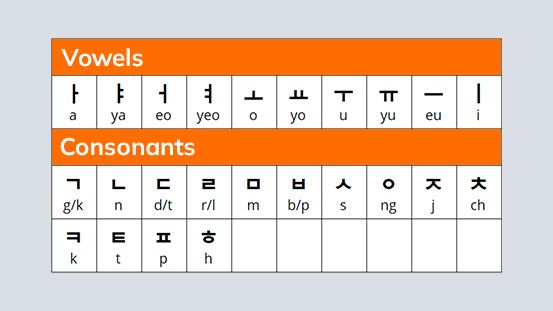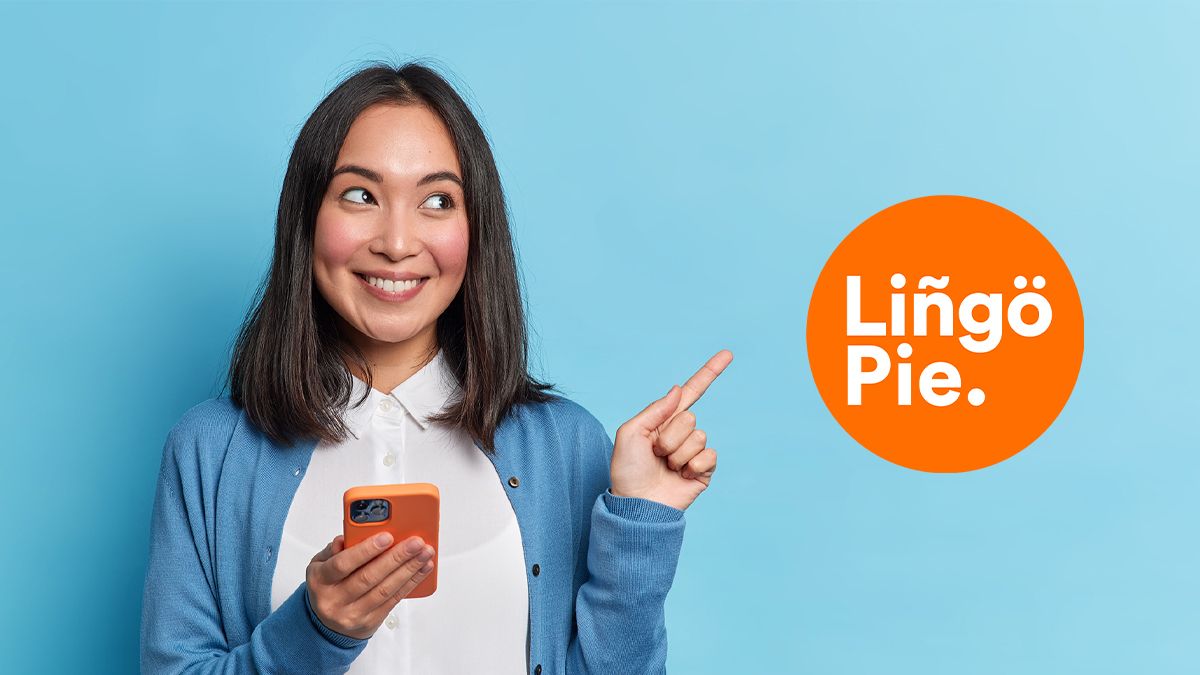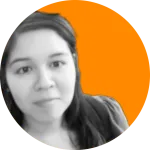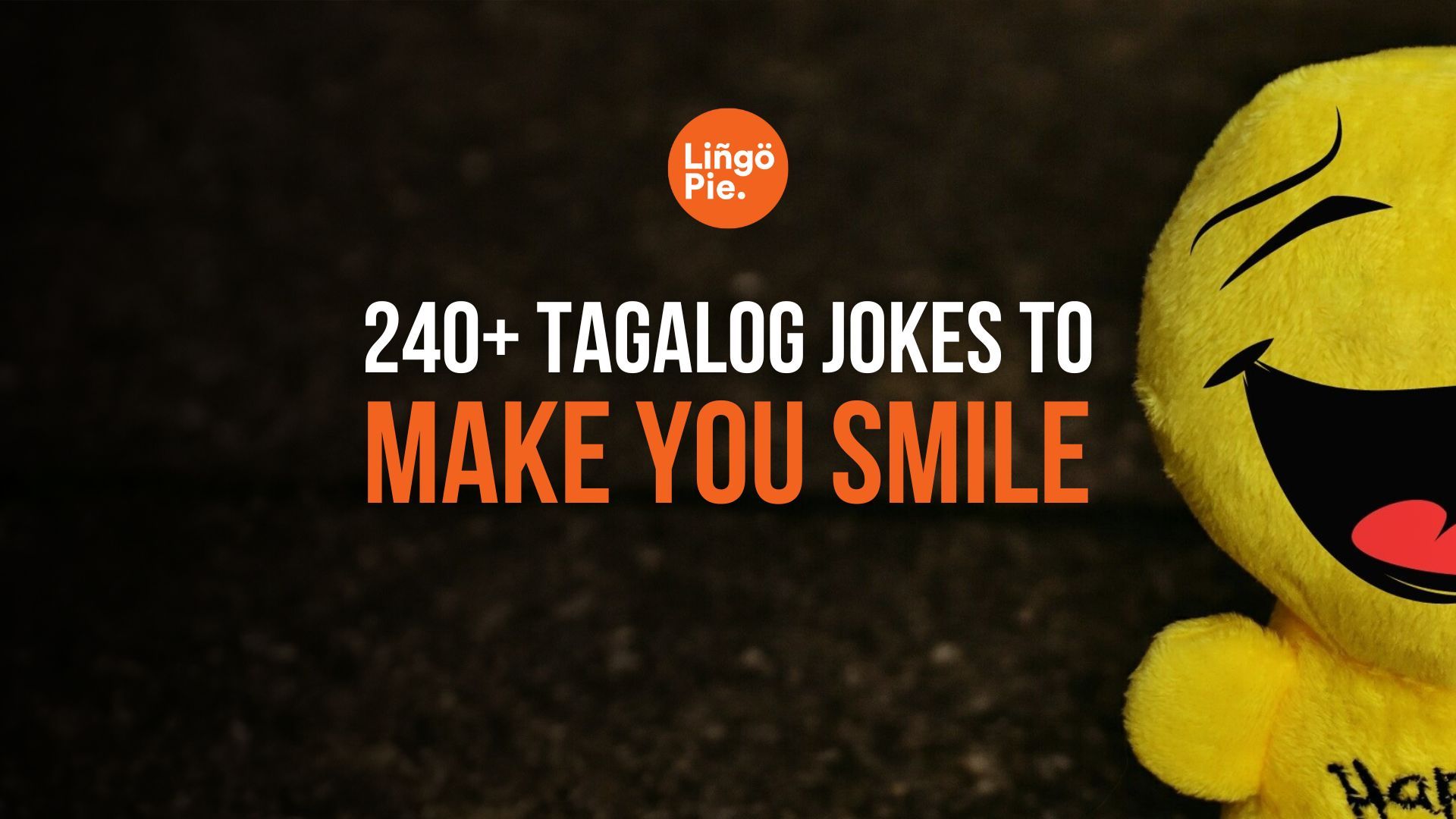If you are learning Korean but feel overwhelmed by Hangul, the Korean alphabet, then don't stress. In this post, we will walk you through learning Korean symbols and help you understand the beautiful writing system of Korean texts.
We will also discuss the Korean alphabet, how to use Hangul characters to form Korean syllables, known as syllable blocks, Hangul consonants and vowels, and Korean pronunciation.
If learning Korean interests you, try out Lingopie, a foreign language streaming platform designed for Korean learning. You can use Lingopie to learn Korean culture, begin to speak Korean, and practice your Korean skills of listening, reading, and writing with dual Korean and English subtitles.
Let's dive in!

An Overview of Hangul - The Korean Alphabet
The Korean alphabet is used in both North Korea and South Korea and is the official Korean writing system.
However, there is also Romanized Hangul, which is when Hangul words are written in the Latin script (English letters), which can be helpful for beginners. For instance, Hangeul is Korean for the word "Hangul", written in the English alphabet.
For instance, 한글 makes the Korean word Hangeul, or "Hangul", the English translation.
How many letters are there in the Korean Alphabet?
There are 24 letters in the Korean alphabet, 14 consonants, and 10 vowels. Once you've learned the 24 Korean characters, you'll be able to form a syllable block, and from there, a word, a sentence, and so on.
When you break it down to just 24 basic letters, it doesn't seem so daunting.
Discover the Genius of Hangul: The Revolutionary Script by King Sejong

Before you start learning the phonetics and writing of Hangul, it's intriguing to delve into the history behind its creation. King Sejong the Great, a visionary ruler of Korea, invented Hangul in 1443, with its official publication following in 1446. The Hunmin Jeongeum, a document accompanying the new script's introduction, elaborated on its underlying philosophy.
Prior to Hangul, Koreans primarily used Hanja (Chinese characters) alongside various complex phonetic systems. This combination made literacy accessible only to the educated elite. King Sejong’s introduction of a straightforward 28-letter alphabet (now 24 letters) transformed this landscape, enabling people of all social classes to learn to read and write Korean in just a few days. Despite initial opposition from scholars who feared it would devalue Korean, Hangul rapidly boosted literacy rates to some of the highest globally.
Today, Hangul is celebrated for its ingenuity and ease of learning. Korea commemorates this achievement with Hangul Day on October 9th, and UNESCO honors King Sejong's contributions with the King Sejong Literacy Prize. Knowing this history enriches your learning experience as you begin mastering Hangul.
The Alphabet: Learning Korean Letters
We recommend you start by looking at a Korean alphabet chart online.
This will display the Korean alphabet letters, their Romanized (or English alphabet) closest equivalent, and pronunciation. You'll also see that the Korean alphabet is split into consonants and vowels.
Korean Consonants
Korean learners can study Korean consonants by relating them to familiar sounds in their own language.
For instance, there are sounds in the Korean language very similar to our English consonant sounds, except for F, R, V, and Z, which do not feature in Korean pronunciation.
Moreover, some sounds, like Q, W, X, and Y, can only be formed by combining two sounds or by adding a vowel.
To learn Hangul consonant characters and their corresponding sounds, we suggest you study a Korean consonants chart.
There are five Korean double consonants, ㄲ, ㄸ, ㅃ, ㅆ, and ㅉ, and these are pronounced with more stress than single Korean consonants.
Anyone who would want to learn Korean writing systems can do so easily. It just takes a little bit of memorization to start learning Korean words.
The next step to read Korean words is to learn Korean consonants. There are 14 consonants in the Korean language. Each of these consonants combines with the vowels to create a syllabic sound.
ㄱ (g/k), ㄴ (n), ㄷ (d/t), ㄹ (r/l), ㅁ (m), ㅂ (b/p), ㅅ (s), ㅇ (ng/silent), ㅈ (j), ㅊ (ch), ㅋ (k), ㅌ (t), ㅍ (p), ㅎ (h).
To learn these consonants, practice writing them and practice speaking them aloud.
ㄱ (g/k)
This consonant makes a (k) sound if it's at the start or end of a word. More often the ㄱ consonant makes a (g) sound if it is before a vowel.
To help you remember, just think of the symbol as the shape your tongue makes as you make the sound. Also, think of the ㄱ as if it's a gun, which starts with the letter g.
ㄴ (n)
This consonant makes the (n) sound in every situation. Just imagine the round part of the n got flattened down to look like ㄴ.
ㄷ (d/t)
This makes a (t) sound if it's at the start or end of a word. It will make (d) sound if it's before a vowel. The ㄷ looks like the letter c which comes right before d. Just remember ㄷ isn't c, it's d!
ㄹ (r/l)
This consonant makes the (r) sound except for at the end of a word. It makes an (l) sound. The ㄹ looks like an s backward, which comes right before the letter r.
ㅁ (m)
This consonant always makes the (m) sound. Just imagine the ㅁ is your mouth open about to bite down on something delicious. "mmmmmm".
ㅂ (b/p)
This consonant makes the (b) sound unless it's at the start or end of a word, in which case it makes a (p) sound. Imagine the ㅂ is a little pot and you're growing beans!
ㅅ (s)
This makes an (s) sound or a (t) sound at the end of a word. Just imagine the ㅅ is a slithering snake.
ㅇ (ng/silent)
This is an interesting symbol because most of the time it is silent unless it is at the end of a word then it makes the (ng) sound. Just think there is nothing inside the circle for ㅇ, so it is silent.
ㅈ (j)
The ㅈ symbol makes the (j) sound, though it makes a (ch) sound at the start of a word and a (t) sound at the end of a word. just imagine the two strokes at the bottom are frog legs that are in the middle of a jump.
ㅊ (ch)
This symbol makes a (ch) sound except it makes a (t) sound at the end of a word. This symbol looks like a standing person who needs a chair.
ㅋ (k)
This symbol is similar to ㄱ, but it sounds more like (kh), like khaki. Just imagine this is someone standing sideways bending over with a great pair of khakis.
ㅌ (t)
This symbol makes the (t) sound. The symbol looks like a train going by quickly.
ㅍ (p)
This symbol makes the (p) sound. This symbol looks like a crown a prince would wear.
ㅎ (h)
This symbol makes an (h) sound except it's silent at the end of a word. Just imagine this is a person wearing a hat.
Korean Vowels
We have already stated that there are 10 Hangul vowels in the Korean language. There are in fact 10 basic vowels. However, many of these can be combined to make a further 11 Korean vowel sounds.
For instance, the Korean vowel sounds ㅡ ("oo") and ㅣ ("ee") can join to form ㅢ, which is similar to the sound you make after the "g" in "gooey".
Once again, it is recommended to look up a Korean vowels chart from which you can study the basic Hangul vowels and their sounds.
While you learn Hangul, you might be intimidated by the pronunciation of Korean vowels. However, with helpful charts and audio clips, you'll find most are similar to sounds you make in your own language.
Take the Korean vowel sound ㅙ, for example, which is pronounced like the first syllable of "wedding".
Once you've got the hang of the Hangul basic vowels and consonants, you will be ready to revisit syllable blocks and start writing and reading!

a (ㅏ)
The a (ㅏ) sound is about the same as in English. The (ㅏ) symbol shows the position your tongue should be in with the letter line jutting to the right.
If you imagine the large line is your mouth and the small line is your tongue then make the sound for (a) like the first vowel sound in the words otter or operate.
ya (ㅑ)
You'll notice the ㅑ symbol and the ㅏ look very similar, but ㅑ has one more stroke. This is on purpose and makes reading Korean words much easier.
The ㅑ is the same sound as ㅏ with a quick (y) sound in front of it. The extra stroke in ㅑ gives it the (y) sound. This extra stroke will happen with a few other vowels as well.
eo (ㅓ)
The ㅓ symbol makes a (u) sound like run. The vertical line is like your mouth and the small line is your tongue. Similar to the ㅏ symbol.
yeo (ㅕ)
The ㅕ has one extra stroke from the ㅓ, which means you add a short (y) sound to the start of it. The Korean pronunciation sounds like the start of yup.
o (ㅗ)
The lips form a rounded shape and push out a little. Make an (o) sound like the starting vowel sound in orange or orangutan.
For the ㅗ symbol, imagine the longer bottom line is your bottom lip and the smaller line is your top lip rising to speak Korean ㅗ sounds.
yo (ㅛ)
Once again the ㅗ and ㅛ symbols look very similar but ㅛ has an extra stroke. Just like with the ㅑ sound, add a quick (y) sound to the start of ㅗ sound. It sounds like (yo) like yo-yo.
u (ㅜ)
The ㅜ symbol makes a short (u) sound like the sound oo has in the word moon. Imagine the horizontal line is your mouth and the vertical line is your bottom lip going down to make this sound.
yu (ㅠ)
As you may have guessed at this point the ㅠ sound is (yu). It has one extra stroke from the ㅜ symbol. It sounds like a shortened version of the English word you.
eu (ㅡ)
The ㅡ makes a sound similar to the u sound in flute. Unlike the previous symbols, this symbol has no (y) version of it.
i (ㅣ)
The ㅣ symbol makes the long (e) sound, like the start of the word eat. Just like the ㅡ symbol, this symbol has no (y) version.
Complex Vowels of the Korean alphabet
To learn Korean you will need to learn the complex vowels (also known as double vowels) will be important for your future of studying the Korean language.
- ㅐ (a as in apple),
- ㅒ (yae)
- ㅔ (e)
- ㅖ (ye)
- ㅘ (wa)
- ㅙ (wae)
- ㅚ (oe)
- ㅝ (wo)
- ㅞ (wei)
- ㅟ (wi)
- ㅢ (eu-ee)
You will need to learn these vowels to learn Korean. However, they are a bit advanced for beginner Korean language learners.
To learn Korean we will start with more basic Korean skills and primarily use the basic vowels.
Korean Double Consonants
There are five double consonants in the Korean language as well. You won't need them immediately to learn Korean writing, but it's good to know they exist.
They are the more stressed version of their single consonant cousins. ㄲ, ㄸ, ㅃ, ㅆ, and ㅉ. They will be important for your speaking skills, but for now, put them aside.
Learn Korean Consonant and Vowels Combinations
Now that you know all to consonants and vowels consult this chart
Each Consonant combine with each vowel with a few exceptions. Each consonant has a way it wants to be written and the vowels will squish in to fit that position.
To learn to write Korean words, memorizing these combinations is necessary. Write out your own chart and place it somewhere visible and you'll master Korean in no time.
Also, speak these at loud to brush up on your speaking skills.
Forming Korean Syllable Blocks
Korean syllable blocks can contain 2, 3, or 4 Korean letters, and always have a mix of consonants and vowels.
- 2-letter syllable blocks always have a consonant followed by a vowel, for example, 개, which means "dog".
- 3-letter syllable blocks are made of a consonant, vowel, and final consonant. An example of this is 문, "door".
- 4-letter syllable blocks go consonant, vowel, and double consonants. 닭 is an example of a 4-letter syllable block ending in double consonants, and it means "chicken".
Note that all syllable blocks in the Korean language begin with an initial consonant. Note the following:
- 3 and 4-letter syllable blocks have a final consonant or final consonants.
- Only 2-letter syllable blocks do not have a final consonant.
How to Learn the Korean alphabet: Pronunciation
Korean pronunciation can be intimidating for beginners, but any good Korean alphabet chart online will have an audio clip attached to each of the Korean characters so that you can hear the pronunciation. This is a great way to learn Hangul.
On top of this, there are fun ways to remember the pronunciation of certain sounds, such as the Korean letter ㅂ, which looks like a bed and makes the sound "B". Or, the Korean character ㅁ, which makes the sound "M" and looks like a mail envelope.
There are some Korean letters that are pronounced differently depending on whether they're placed at the beginning, middle, or end of a word, such as ㄱ ("G").
While others, like ㄲ ("K"), are pronounced the same regardless of where they are placed in a word.
FAQs Relating to Learning the Korean Alphabet, Hangul
What is the easiest way to learn the Korean alphabet?
The easiest way to learn the Korean alphabet, Hangul, is through visual aids and repetitive practice. Start by learning the basic shapes of the letters and their sounds. Use flashcards, apps, and online resources for beginners. Practice writing each letter while saying its sound aloud. Platforms like Lingopie, which use real TV shows and music for immersive language learning, can make this process enjoyable and effective.
What are the 24 letters in Korean?
The Korean alphabet, Hangul, consists of 24 letters: 14 consonants and 10 vowels. The consonants are ㄱ, ㄴ, ㄷ, ㄹ, ㅁ, ㅂ, ㅅ, ㅇ, ㅈ, ㅊ, ㅋ, ㅌ, ㅍ, and ㅎ. The vowels are ㅏ, ㅑ, ㅓ, ㅕ, ㅗ, ㅛ, ㅜ, ㅠ, ㅡ, and ㅣ. These letters combine to form syllables, making up the written and spoken Korean language.
What is ABCD in the Korean language?
In the Korean language, the equivalent of the English alphabet's ABCD are the first four consonants of Hangul: ㄱ (giyeok), ㄴ (nieun), ㄷ (digeut), and ㄹ (rieul). When spoken, this sequence is pronounced as "가나다" (ganada). These consonants, when combined with vowels, form the basis of Korean syllables.

What is the easiest way to learn the Korean alphabet?
The easiest way to learn the Korean alphabet is to start with basic letters before you move on to double Korean vowels and more complex sounds.
Rather than tackling all the Korean letters at once, learn the consonants and then the vowels separately. Finally, as childish as it might seem, the Korean alphabet song is worth listening to.
How do I start to build my Korean vocabulary?
To learn Hangul, you'll begin with Korean alphabet letters, build to creating a Korean syllable, and eventually learn to form a Korean word with one or more syllables.
As you learn Korean script writing, you'll develop an awareness of common Korean words.

Summing up: How to learn the Korean alphabet
This has been a brief guide to understanding the Korean alphabet. We have discussed Korean letters, how to form syllable blocks, and how to learn Korean alphabet pronunciation.
We now know that the Korean alphabet was designed to be learned easily, is highly expressive, and is the primary alphabet used by native Korean speakers.
There are some Korean alphabet rules that we have discussed, such as the need for final consonants on Korean words with more than one syllable.
It is a very scientific alphabet but was created to be accessible, so once you understand the basic rules, you should be able to read Korean at a beginner level, and can even begin writing Korean.
While you learn Hangul, you'll be exposed to many Korean words, and once you have mastered the alphabet, you will already have a solid foundational vocabulary.
Remember, if you want to learn Korean, sign up for Lingopie's great streaming service where you can watch Korean TV and movies. We even have a post listing the best K-Dramas to help your studies.
Exposure to a native Korean speaker in a show will help you learn to speak Korean, learn Korean culture, and even read Korean, via subtitles. Your Korean learning journey begins here!
Related:Learn Korean with Webtoons







![11+ Best Shows On Netflix To Learn Korean [2025]](/blog/content/images/size/w300/2025/05/Best-Shows-On-Netflix-To-Learn-Korean.jpg)

